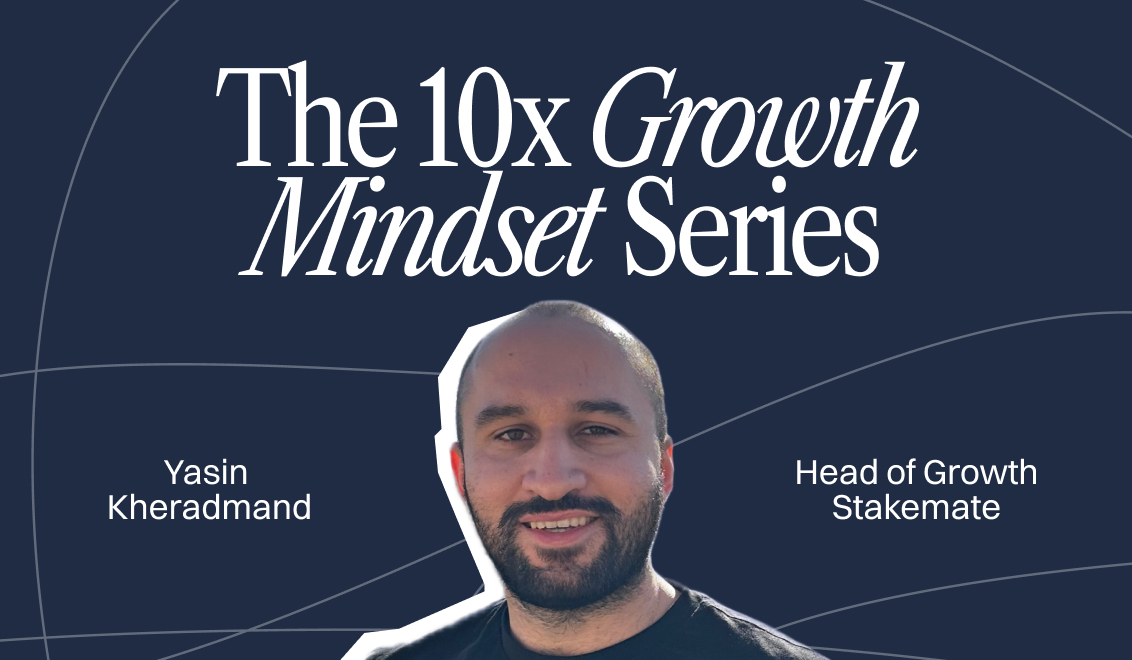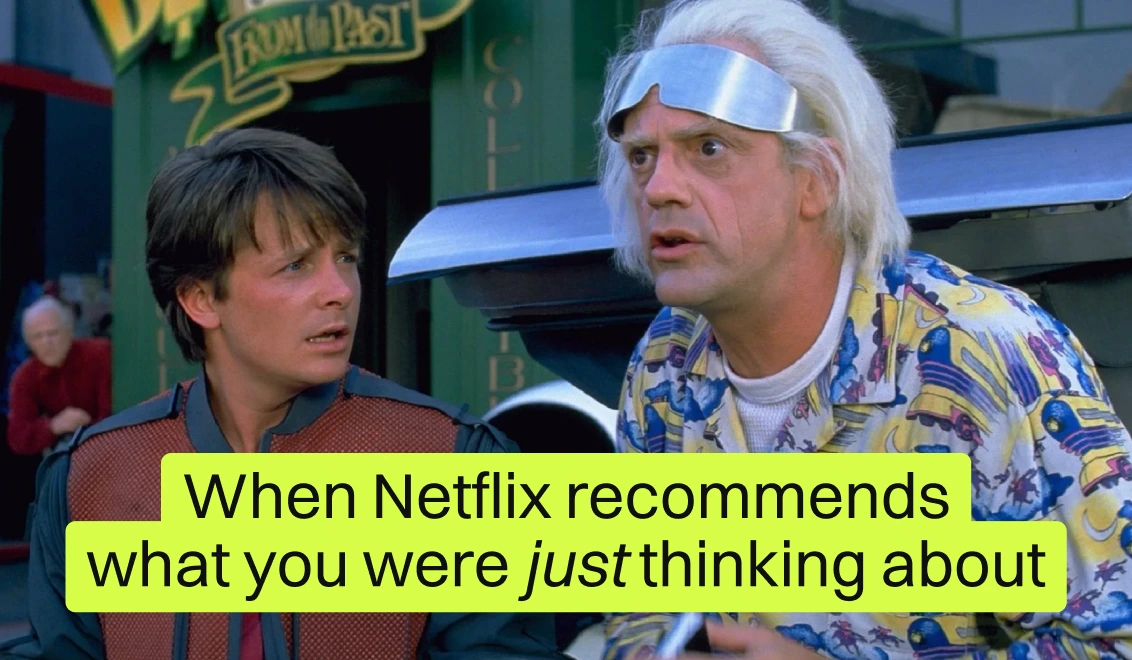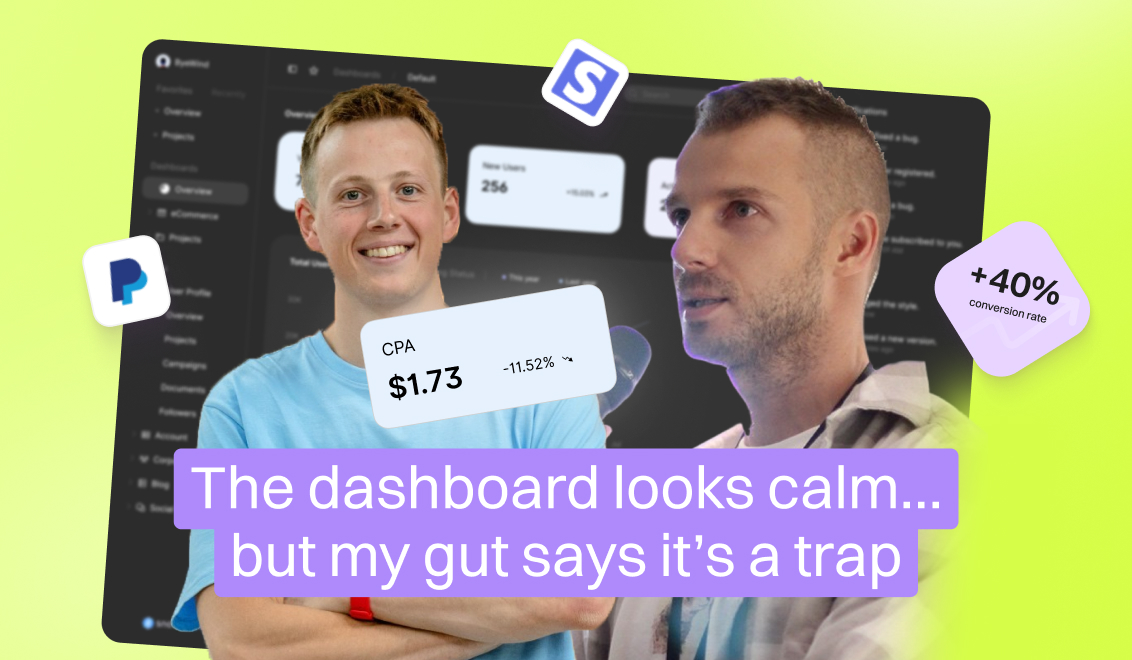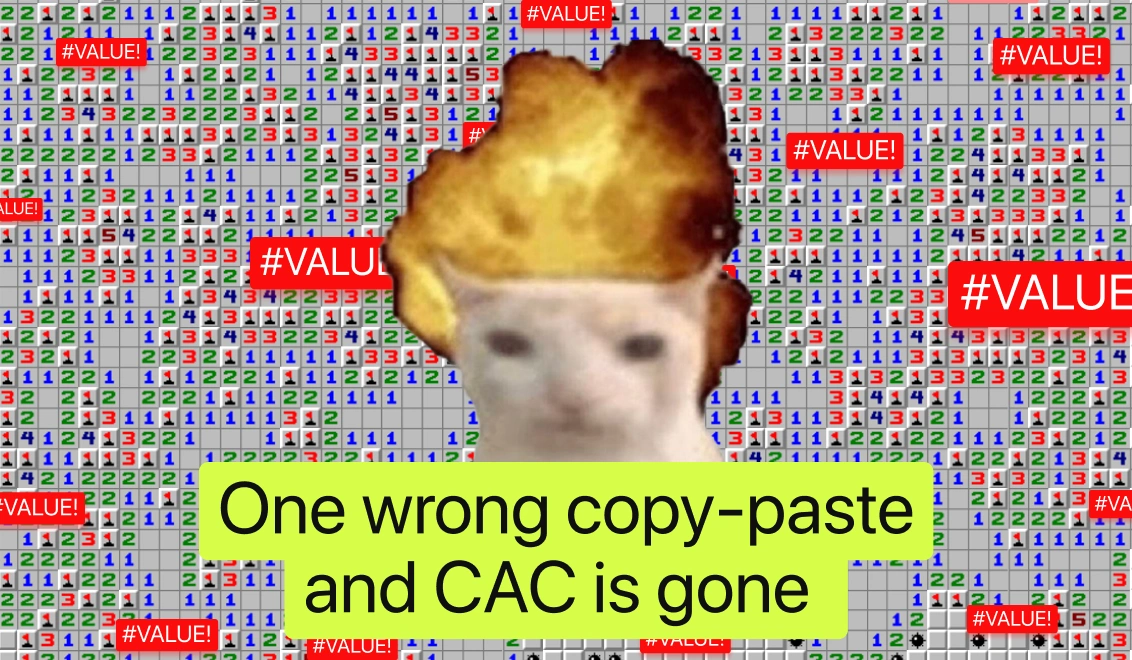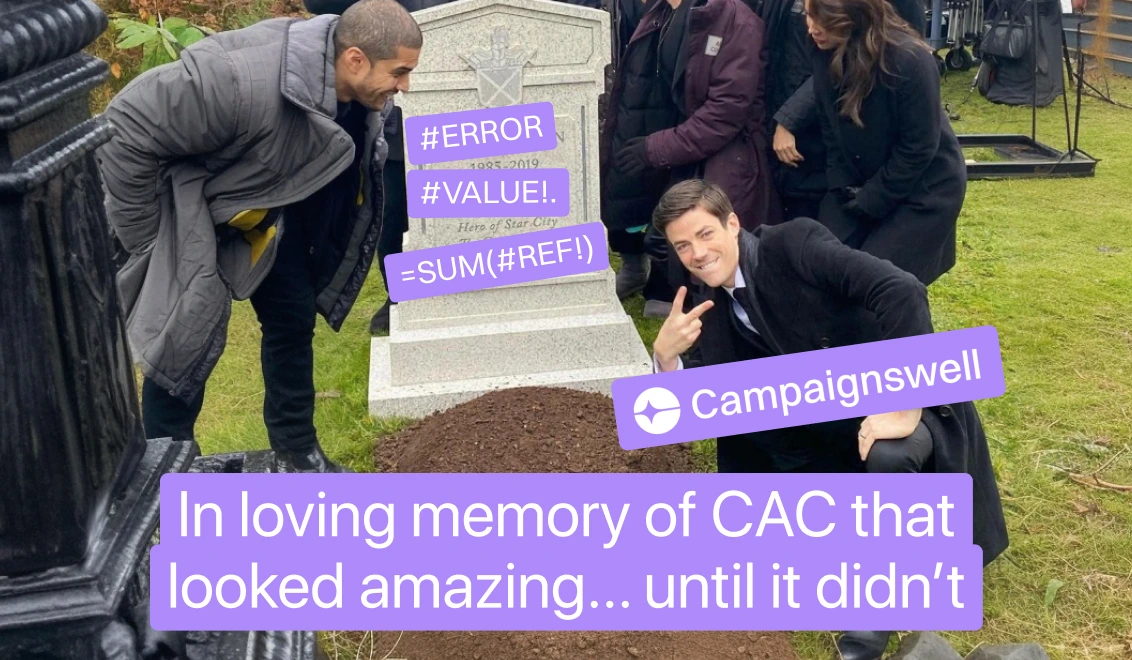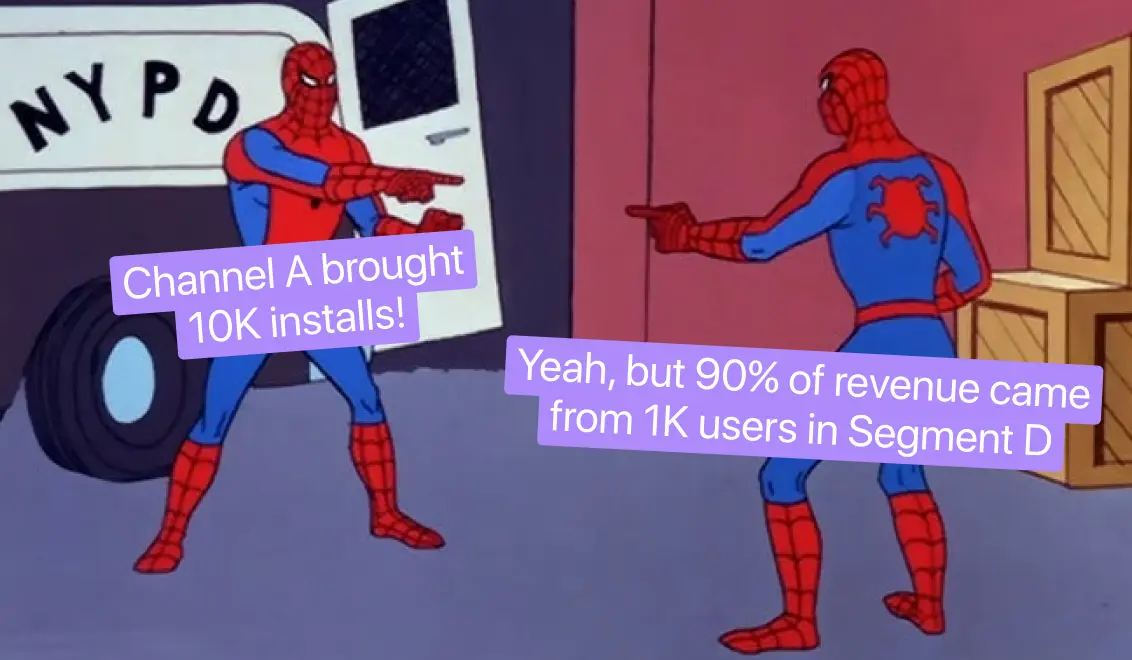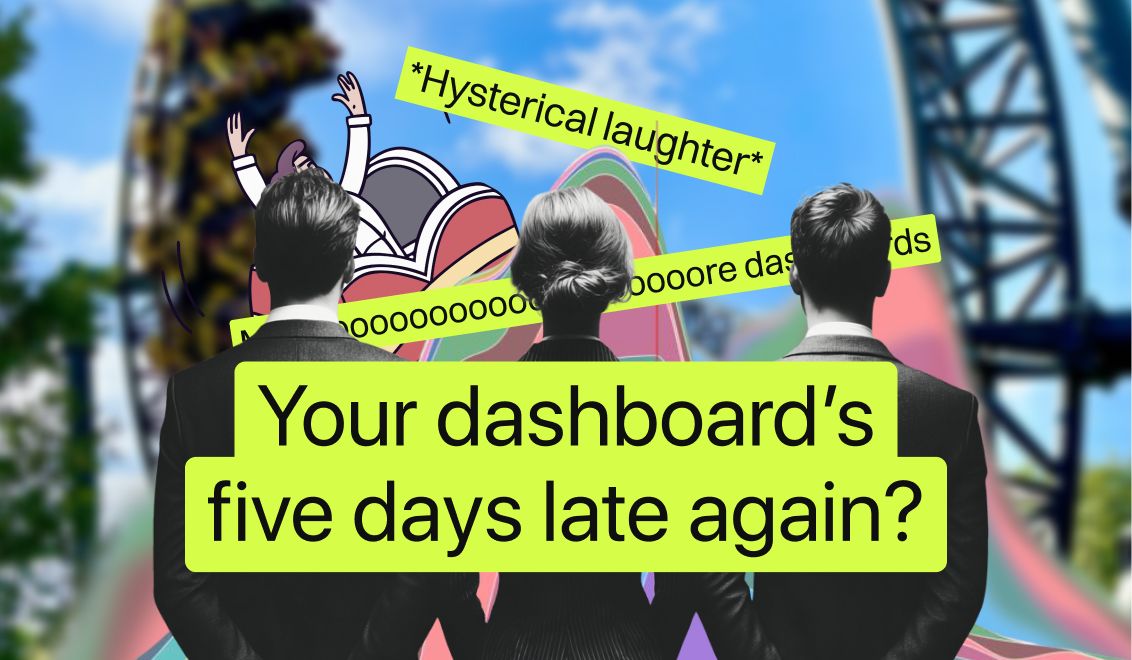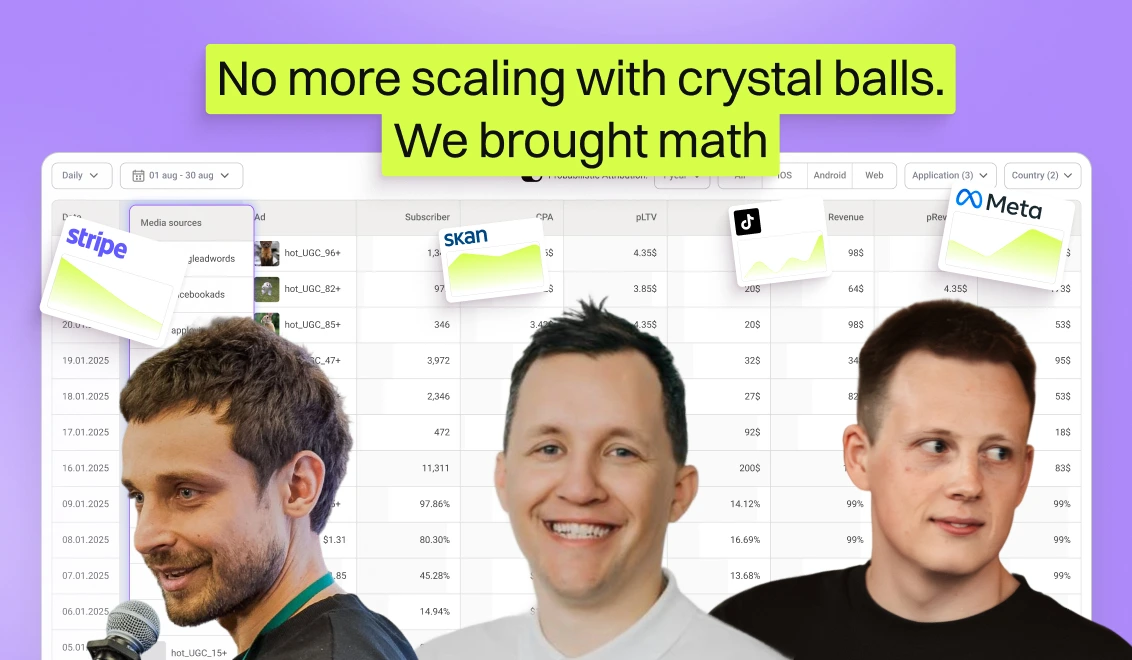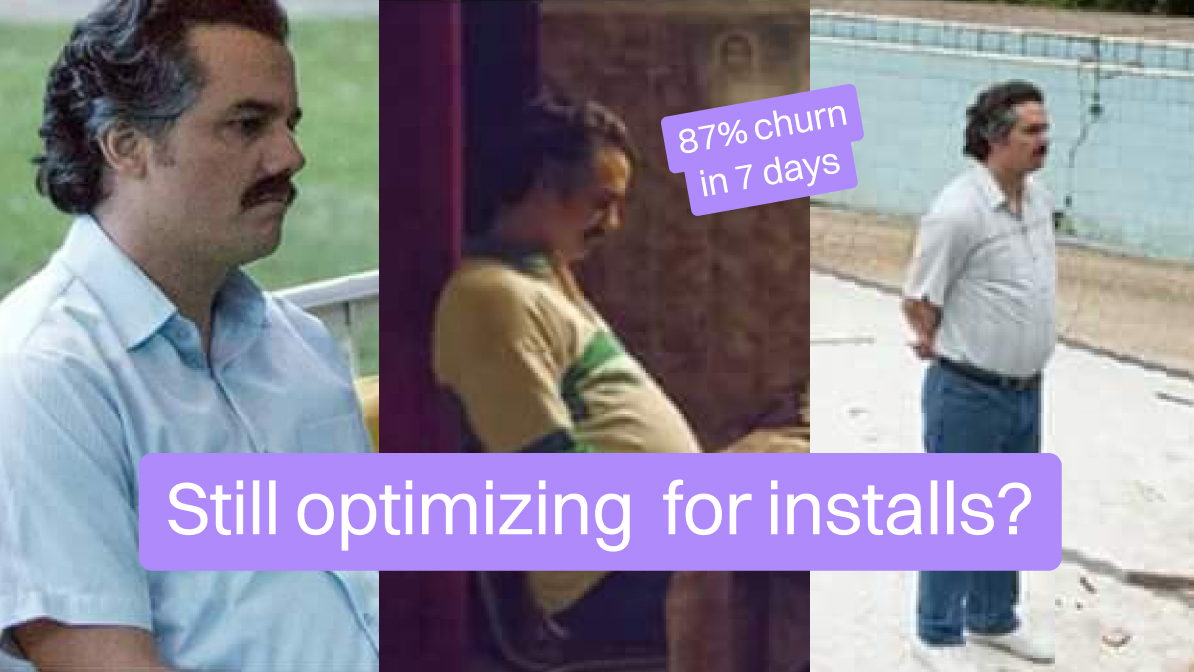ROAS prediction strategy that actually works (and why your dashboard isn’t enough)
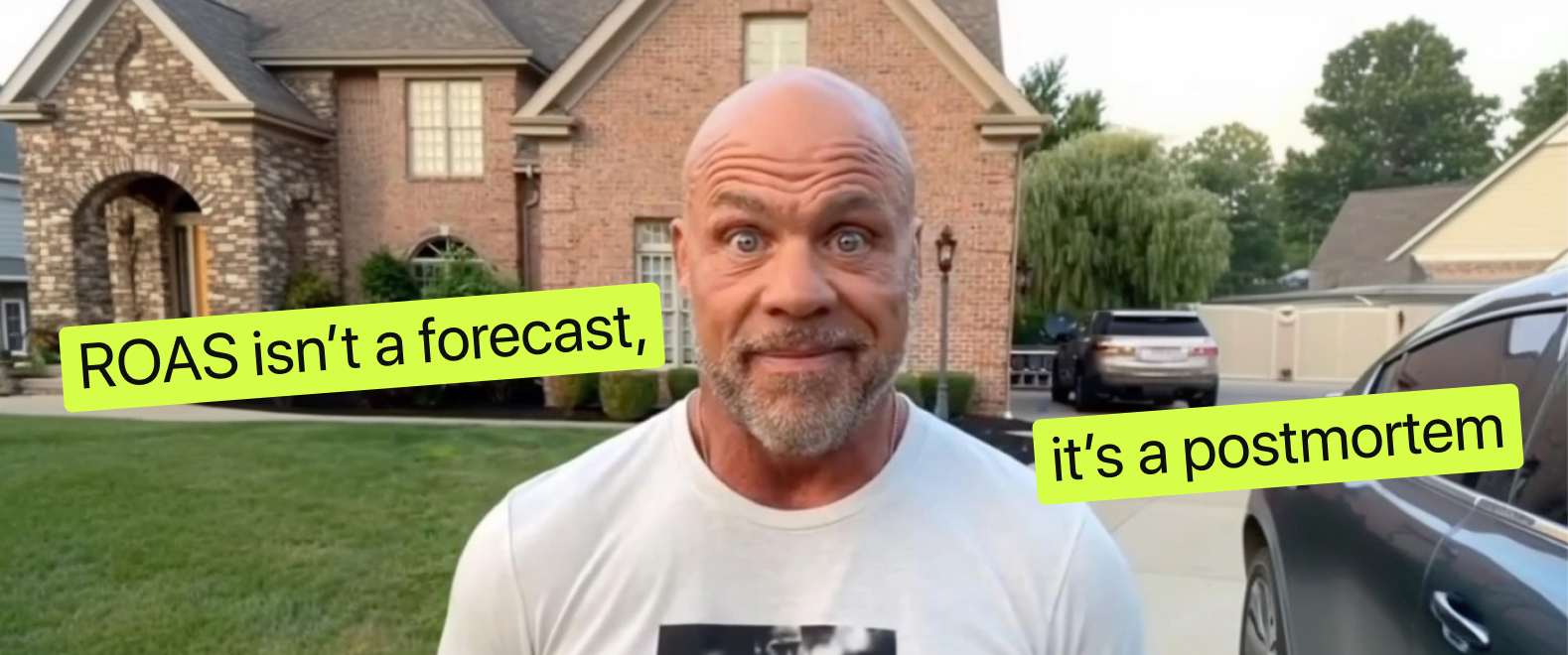
If ROAS is your compass, why does it keep pointing backwards?
Ask any growth team what their north star is, and you’ll hear the same acronym again and again: ROAS. It’s the performance marketer’s pulse check, the metric every budget decision is supposed to orbit.
But here’s the weird part: most teams only really see ROAS after the fact.
They launch a campaign, spend a few grand, wait for conversion lag to play out, and then finally see the number they were supposed to be optimizing toward. By the time the dashboard lights up, the budget’s burned or the creative’s stale. It’s like trying to steer using the rearview mirror.
One UA lead even joked, “ROAS isn’t a forecast, it’s a postmortem.” And the more you think about it, the more it checks out.
The truth is, what most teams call ROAS forecasting is just extrapolation, based on a mix of Day‑1 revenue and gut feel. The actual predictive strategy? That’s still rare. But it’s where the real edge is.
Because the top teams aren’t just tracking what their spend did, they’re seeing, in near real time, what it will do and adjusting before the dip.
In this piece, we’ll break down why traditional ROAS forecasting keeps missing the mark, and how a predictive strategy driven by early cohort behavior can actually show you what’s worth scaling before it becomes obvious.
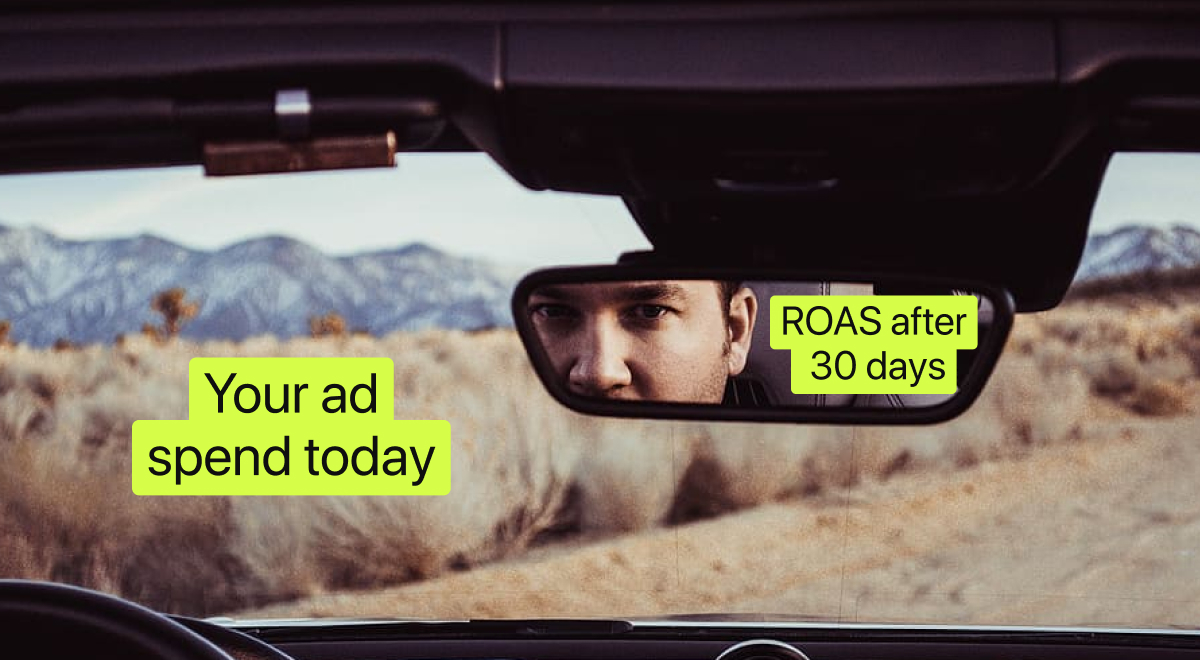
The problem with ROAS forecasting today
For a metric as central as ROAS, it’s surprising how unreliable most teams find it in practice. Not because it’s inherently flawed, but because the way it’s used is lagging behind how fast growth teams have to move.
Here’s the pattern: a new campaign goes live, the creative looks sharp, the CPI is decent, installs are flowing. But ROAS is stuck in limbo. The dashboard updates, but real revenue takes time to appear: subscriptions, repeat purchases, upgrades. And by the time the “true” ROAS comes into focus, you’ve already spent 80% of the budget.
ROAS is a trailing metric. It reflects what users have done, not what they’re likely to do. That’s a serious mismatch for teams making daily or even hourly budget decisions.
One performance marketer vented in a thread: “We made cuts based on Day‑3 ROAS. Turns out the cohort was just slow to convert, and by the time we realized, we’d killed the campaign.”
The issue isn’t that teams aren’t looking at data, it’s that the data they’re looking at is always behind. ROAS forecasts that rely on static benchmarks or last-click attribution don’t reflect user behavior as it unfolds. And in mobile, that delay is deadly.
So what’s the alternative? We’ll break it down next: a ROAS prediction strategy built on early behavioral signals, before the budget’s gone and the cohort’s churned.
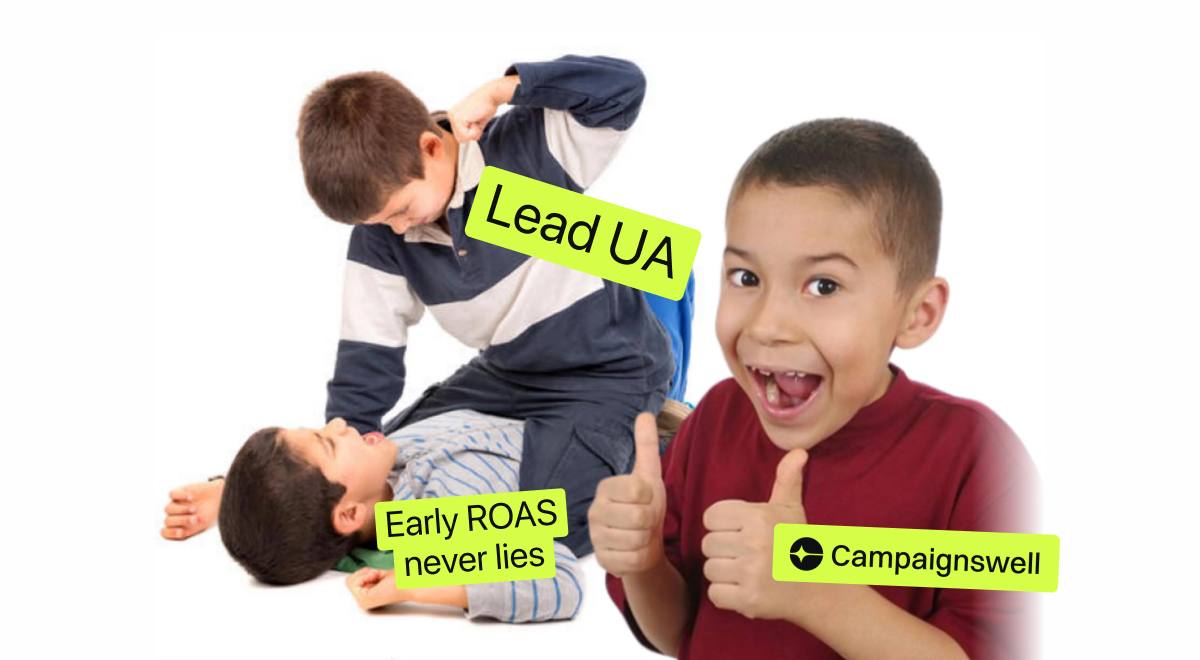
What a good ROAS prediction strategy looks like
If traditional ROAS forecasting leaves you reacting too late, predictive strategy flips the timeline. You shift from analyzing what users have done to modeling what they will do, and act before your budget evaporates.
That’s what teams using Campaignswell are doing already.
The team behind a fast-scaling AI companion app ran multiple funnel and pricing tests and tracked predicted LTV and ROAS for each cohort segment. When they spotted which cohorts showed clear signs of long-term value, they leaned in and increased the budget. That shift led to a 10X jump in revenue, driven by the confidence Campaignswell’s predictive insights gave them.
Let us give you one more example. A VPN app team, juggling data silos and attribution gaps, turned to Campaignswell to forecast ROAS based on early retention and engagement. On Android, they were just starting to experiment with paid acquisition — initial 6-month ROI was around 14%. With clearer predictive signals and better internal alignment, they tripled spend over the next six months while boosting Android ROI to 50%. On iOS, they pushed ROI from 7% to 50% by reallocating spend based on model-driven signals.
Another growth marketer working with a high-volume lead gen funnel built a custom ROAS prediction model using live event data. They trained it to update expected returns as more data rolled in, starting with rough projections at Day‑1 and refining them daily. By Day‑7, their forecast often aligned within 5–10% of the final 30-day ROAS, giving them the confidence to kill underperforming ads and scale winners early. That one shift helped reduce wasted budget by nearly 20% over a quarter.
These are the kinds of moves that separate teams stuck in reporting cycles from those growing with intention. ROAS doesn’t have to be a post-mortem; it can be a live signal that guides your next move.
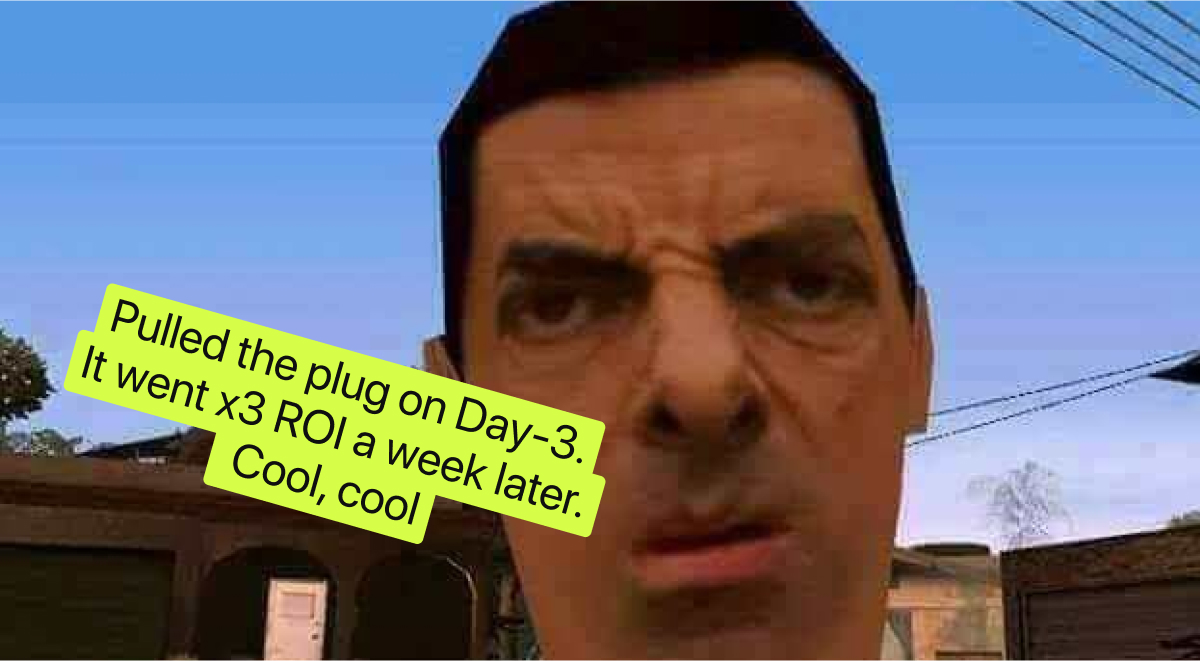
How top teams use predictive ROAS to make real-time decisions
Predictive ROAS only works if you actually use it. And the best teams do exactly that: they make it part of their creative testing, budget allocation, and platform strategy playbook.
1. Creative testing: don’t wait for burnout
Instead of waiting two weeks for statistical significance, predictive ROAS lets teams spot winning creatives after just a few days. One team running 15+ creatives weekly used early ROAS forecasts to kill underperformers by Day‑3, before they drained budget. Another doubled down on a surprisingly strong ad variant that outperformed others long-term, even though it lagged on CPI. They looked past surface metrics and focused on future value, and that made all the difference.
2. Budget shifts across channels and geos
For teams managing dozens of micro-campaigns across platforms and countries, predictive ROAS is a sanity-saver. It shows where ROAS is likely to hold up over time, not just where CPIs are low. One UA manager saw better returns by shifting spend from cheaper LATAM traffic to higher-value segments in Germany, where early engagement signaled long-term payoff.
3. Predictive ROAS bridges gaps in iOS attribution
Since the iOS privacy changes, marketers have lost deterministic attribution and precise install tracking, especially on post‑IDFA devices. SKAdNetwork provides delayed and aggregated campaign data, but not enough resolution to steer spend in real time. This disruption has made traditional ROAS slow, fragmented, and unreliable.
Predictive ROAS uses early cohort behavior — retention patterns, in-app conversions, channel context — to model what users will do, not what they already did. These forward-looking estimations offer actionable clarity long before SKAN postbacks fully arrive.
You may not have full user-level attribution anymore, but with predictive modeling, you regain timing and directional control. It’s less about perfect data, and more about strategic agility.
Just keep in mind, if you’re running a subscription app, early indicators can be noisy. Use them to guide decisions, but stay cautious about overreacting before the full value of a cohort plays out.
4. Predictive ROAS > Early ROAS
It’s tempting to celebrate a high Day 7 ROAS, but that metric often favors impulse buyers who churn fast. For subscription apps, real value shows up later — through renewals, upsells, and long-term engagement. One team tested three paywall variants; the version that looked worst on early ROAS ended up driving the highest LTV over six months. Predictive ROAS helped them spot that potential before it was too late. Without it, they would’ve shut down their most profitable funnel. When you need to bet on what actually scales, predictive > reactive every time.
The bottom line: real-time ROAS prediction turns dashboards into decision engines, helping you act while there’s still time to change the outcome.

The wrap-up: ROAS is only as good as your timing
For all its importance, ROAS often arrives too late to change anything. By the time you know whether a campaign paid off, the budget’s gone, the creative’s tired, and your team’s already chasing the next target.
That’s why top teams are shifting their mindset from backward-looking analysis to forward-focused prediction. They’re not just measuring return after the fact. They’re forecasting it. They’re reading cohort signals while campaigns are still live, and reallocating spend while the outcome is still in play.
Predictive ROAS isn’t a nice-to-have. It’s how modern UA teams stay ahead of performance drops, scale what works faster, and stop burning money on the wrong bets.
And the best part? You don’t need a data science department or weeks of modeling to get there.
Where predictive ROAS becomes practical
Everything we’ve talked about — early signals, cohort-based ROAS, real-time decisions — only works if you’ve got the tools to surface those insights fast enough to act on them.
That’s exactly what Campaignswell was built for.
Instead of chasing spreadsheets or waiting for 30-day results, Campaignswell pulls from real-time user behavior to project ROAS by cohort, campaign, creative, geo, or platform. It updates daily. No need for manual exports. No lag between insight and action.
You see where your spend is headed, which creative is gaining traction, and which user segments are worth your next dollar, not next quarter, but today.
And the proof is in the results. Teams using Campaignswell have scaled 10X in spend without losing efficiency, tripled ROI across undervalued segments, and finally made creative testing cycles fast enough to match their ambitions.
If you’re ready to stop looking backward and start investing forward, Campaignswell’s where that shift begins.
Book a walkthrough and see how it fits into your stack.

Co-founder & CEO at Campaignswell



